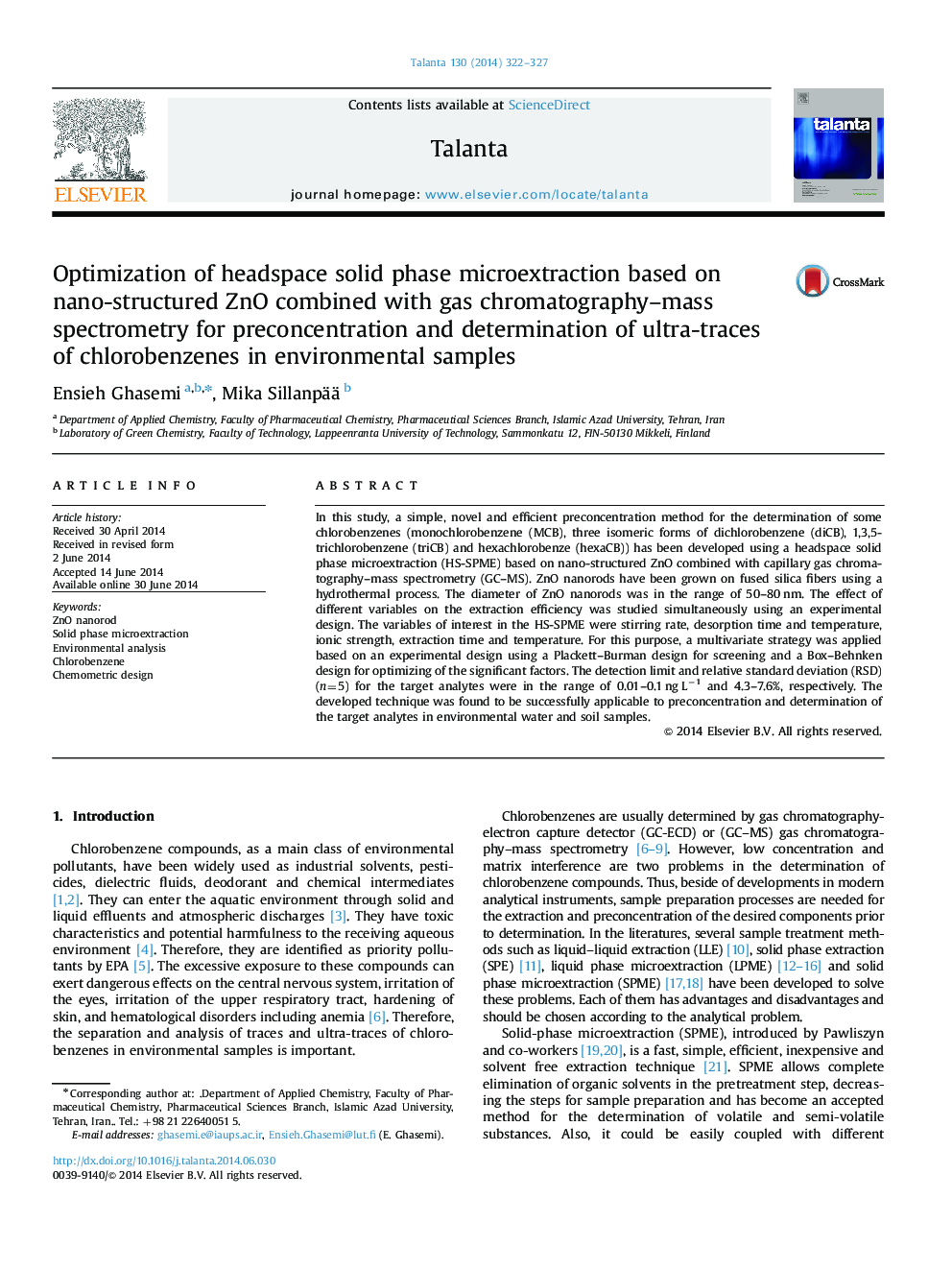| کد مقاله | کد نشریه | سال انتشار | مقاله انگلیسی | نسخه تمام متن |
|---|---|---|---|---|
| 1243597 | 1495805 | 2014 | 6 صفحه PDF | دانلود رایگان |

• HS-SPME based on nano-structured ZnO was applied for preconcentration of CBs.
• The experimental parameters were optimized using chemometric design.
• Under optimum conditions, the high preconcentration factor was obtained.
• The HS-SPME-GC–MS was successfully applied for analysis of CBs in environmental samples.
In this study, a simple, novel and efficient preconcentration method for the determination of some chlorobenzenes (monochlorobenzene (MCB), three isomeric forms of dichlorobenzene (diCB), 1,3,5-trichlorobenzene (triCB) and hexachlorobenze (hexaCB)) has been developed using a headspace solid phase microextraction (HS-SPME) based on nano-structured ZnO combined with capillary gas chromatography–mass spectrometry (GC–MS). ZnO nanorods have been grown on fused silica fibers using a hydrothermal process. The diameter of ZnO nanorods was in the range of 50–80 nm. The effect of different variables on the extraction efficiency was studied simultaneously using an experimental design. The variables of interest in the HS-SPME were stirring rate, desorption time and temperature, ionic strength, extraction time and temperature. For this purpose, a multivariate strategy was applied based on an experimental design using a Plackett–Burman design for screening and a Box–Behnken design for optimizing of the significant factors. The detection limit and relative standard deviation (RSD) (n=5) for the target analytes were in the range of 0.01–0.1 ng L−1 and 4.3–7.6%, respectively. The developed technique was found to be successfully applicable to preconcentration and determination of the target analytes in environmental water and soil samples.
Figure optionsDownload as PowerPoint slide
Journal: Talanta - Volume 130, 1 December 2014, Pages 322–327